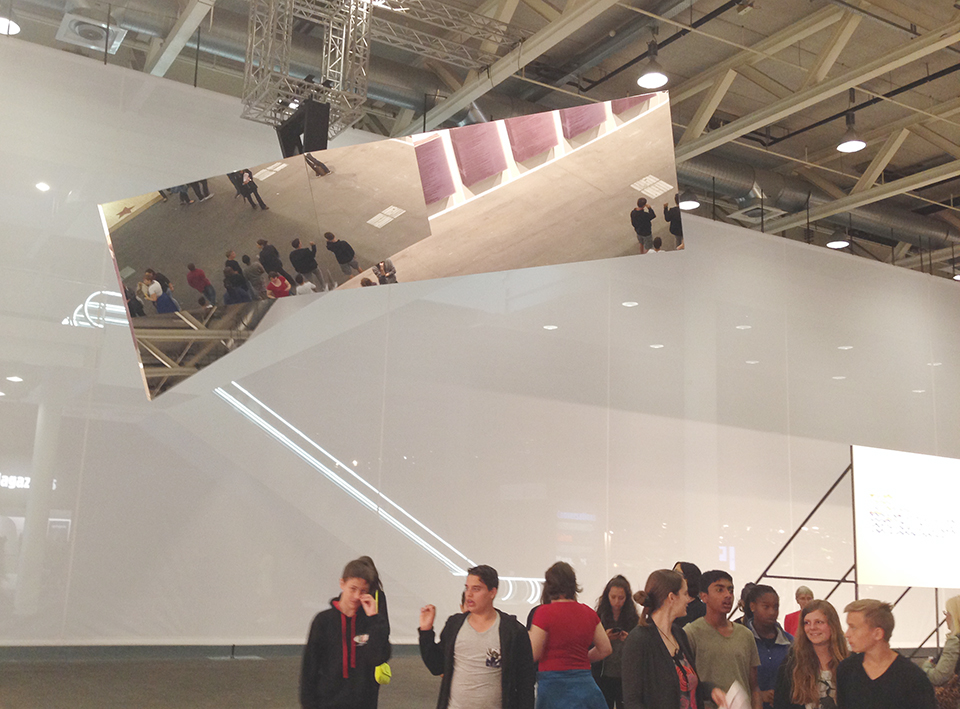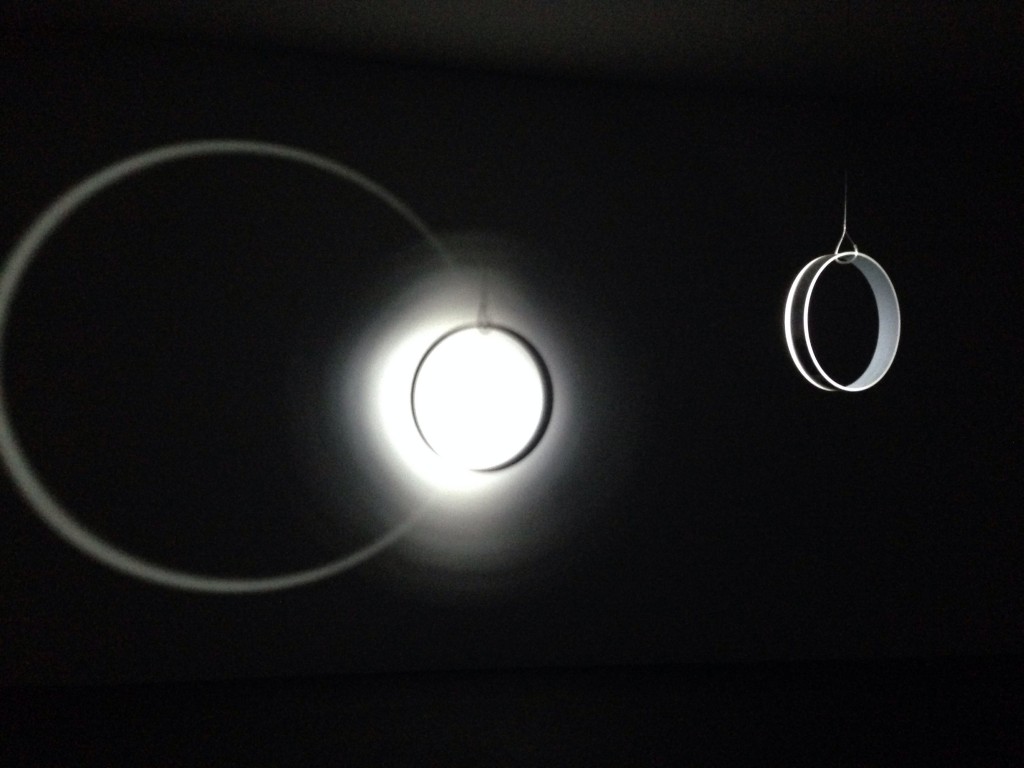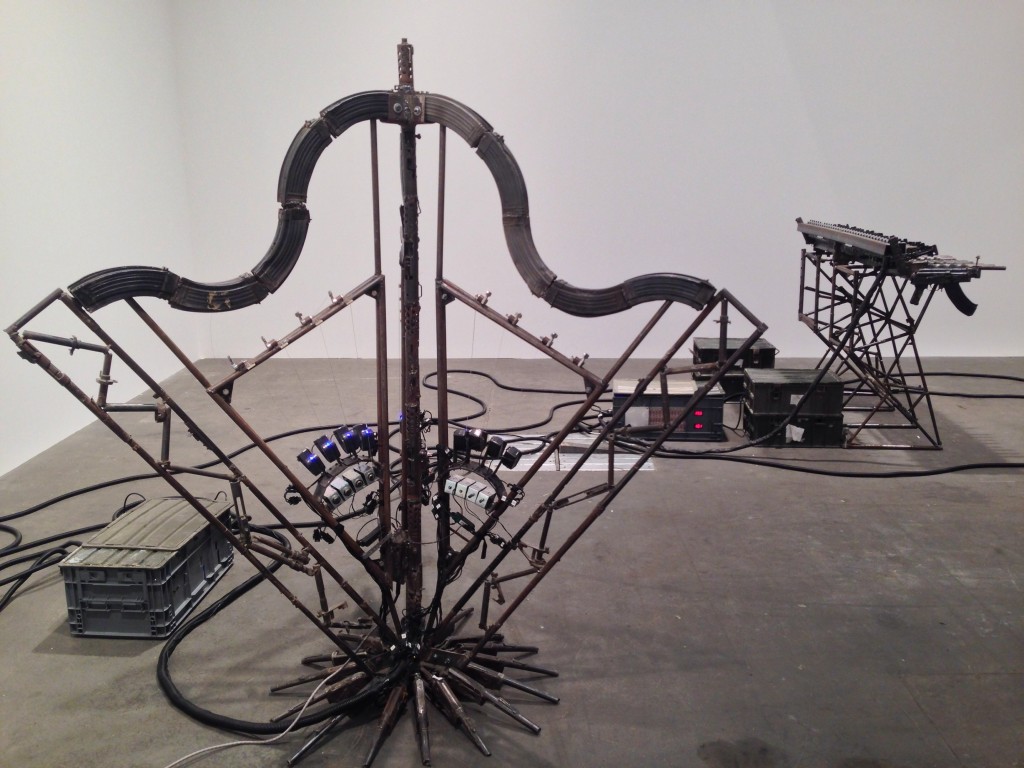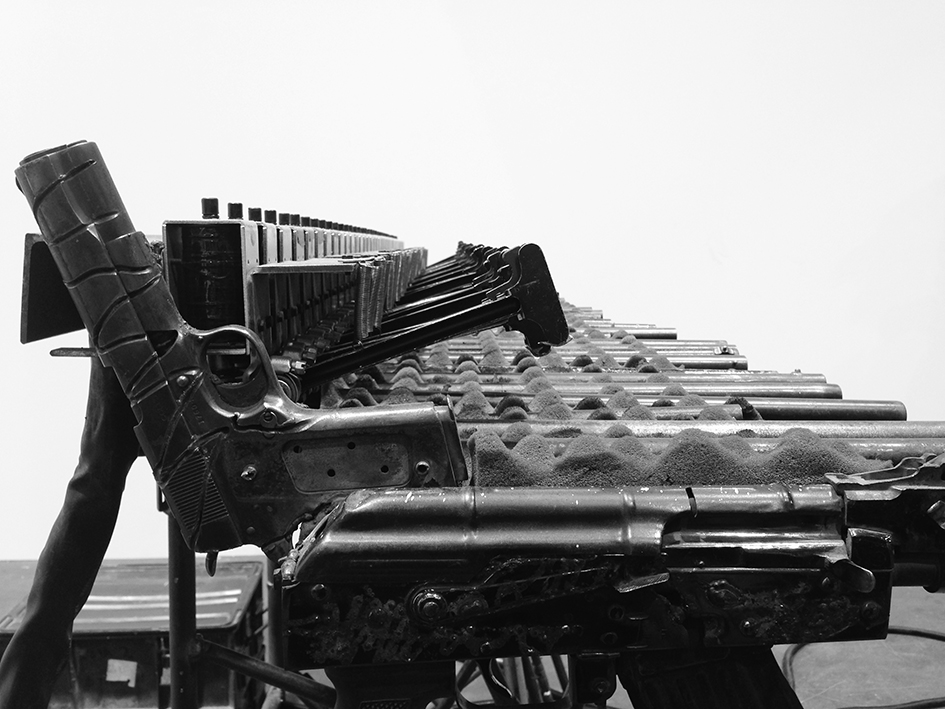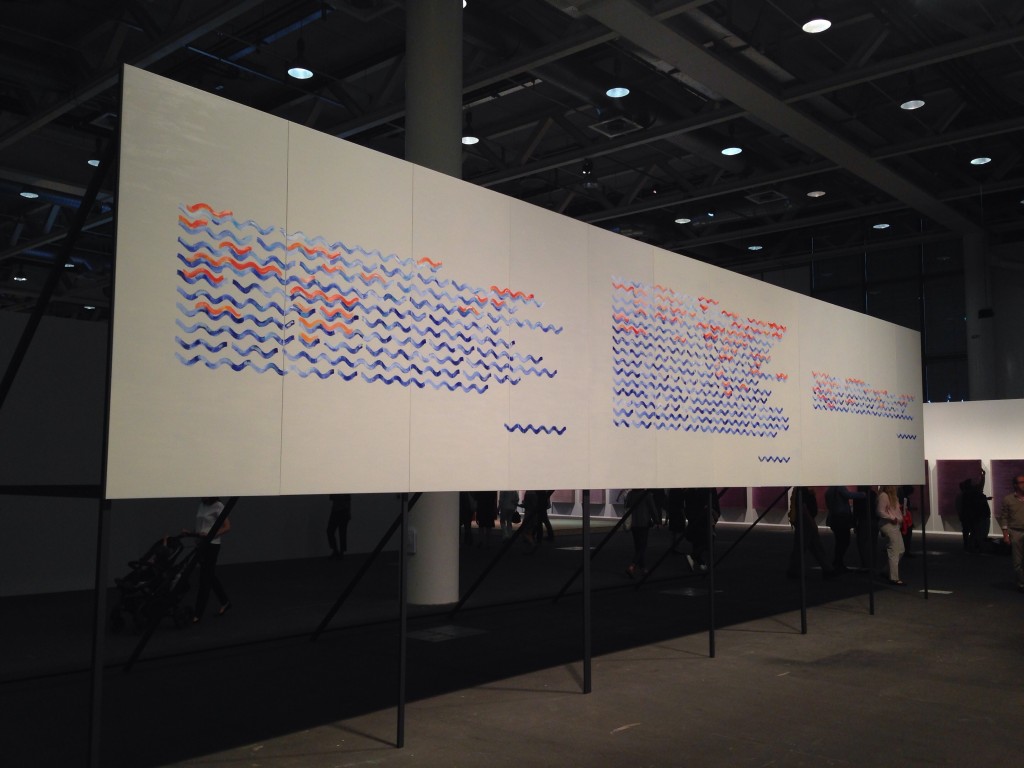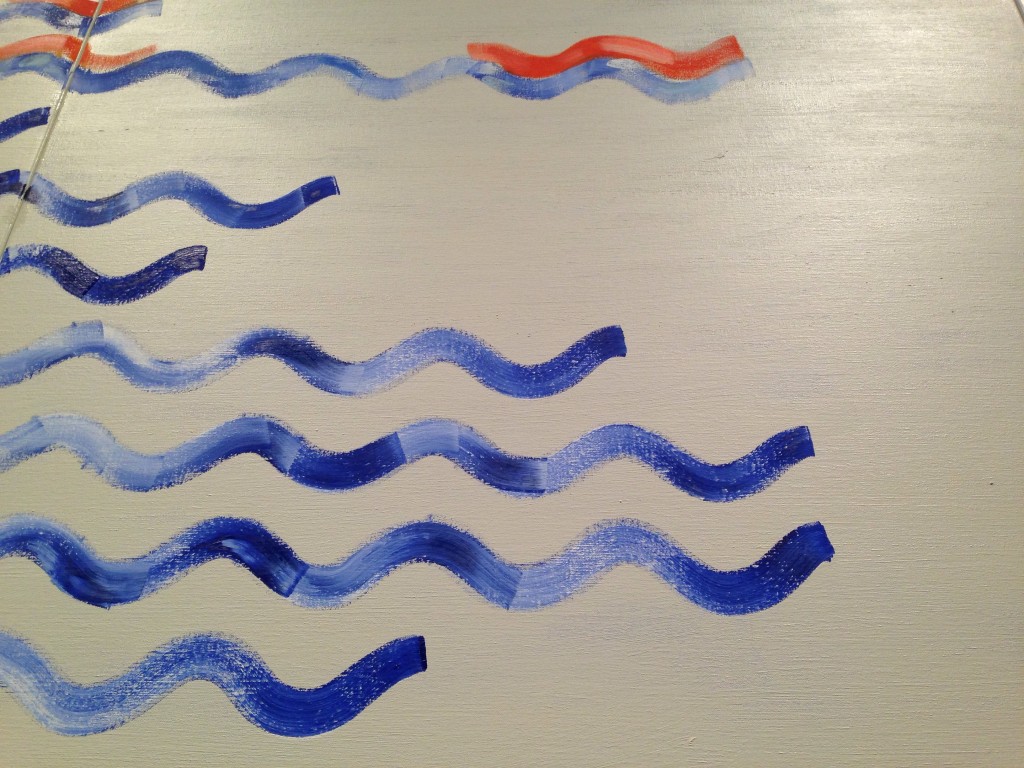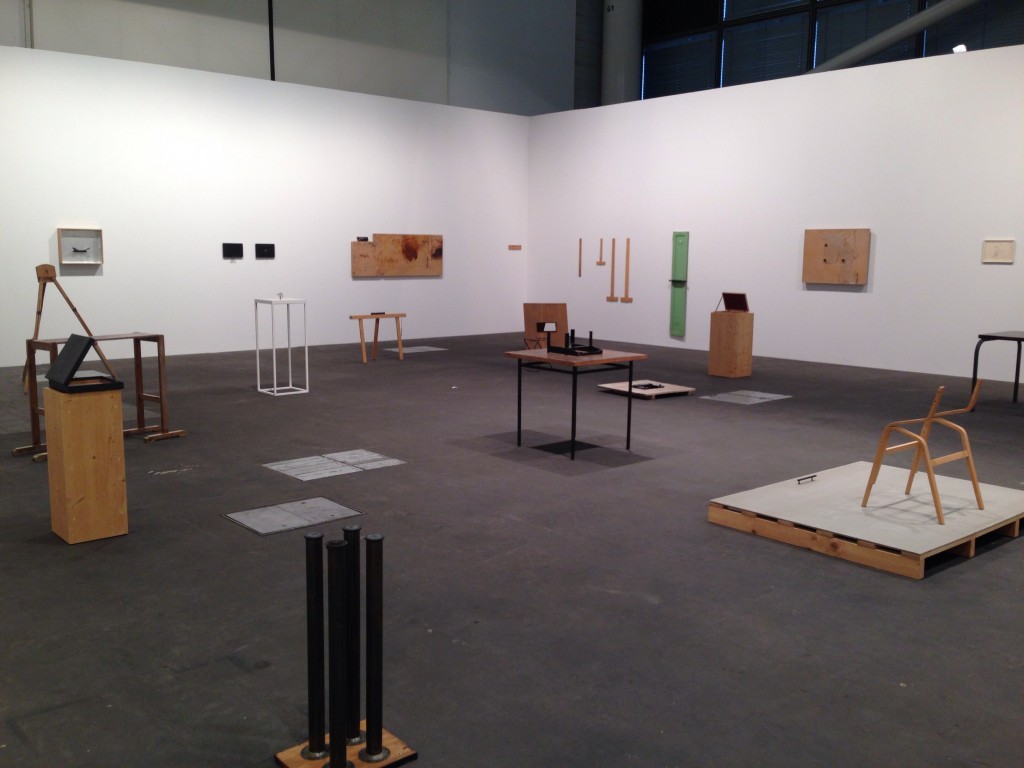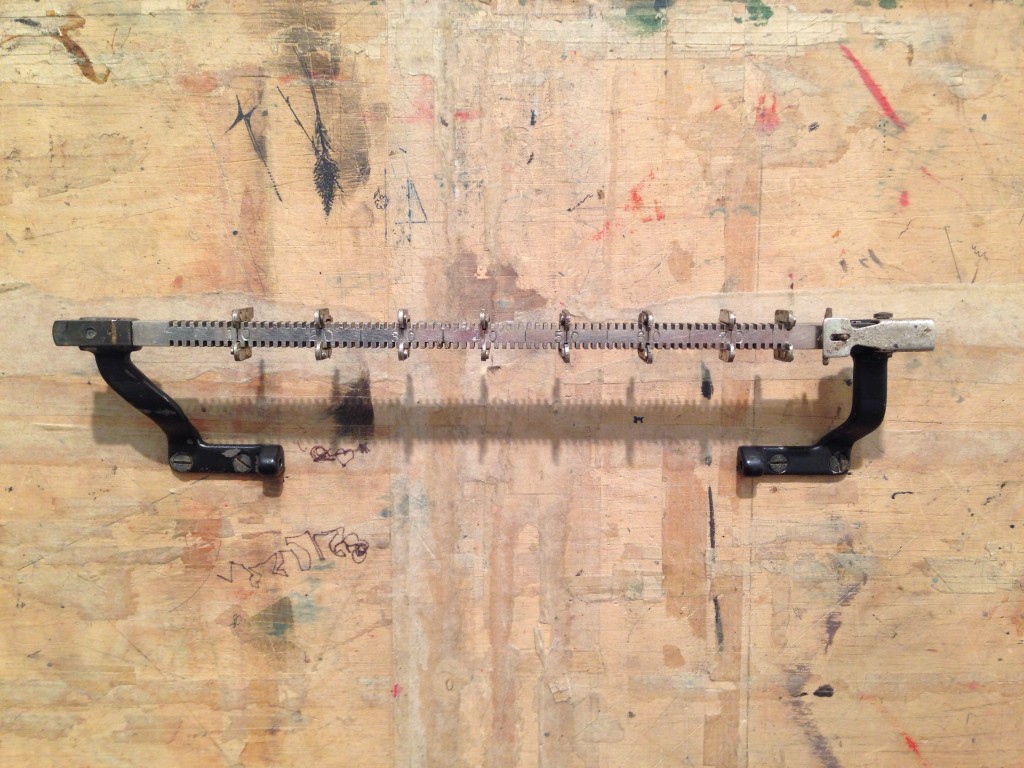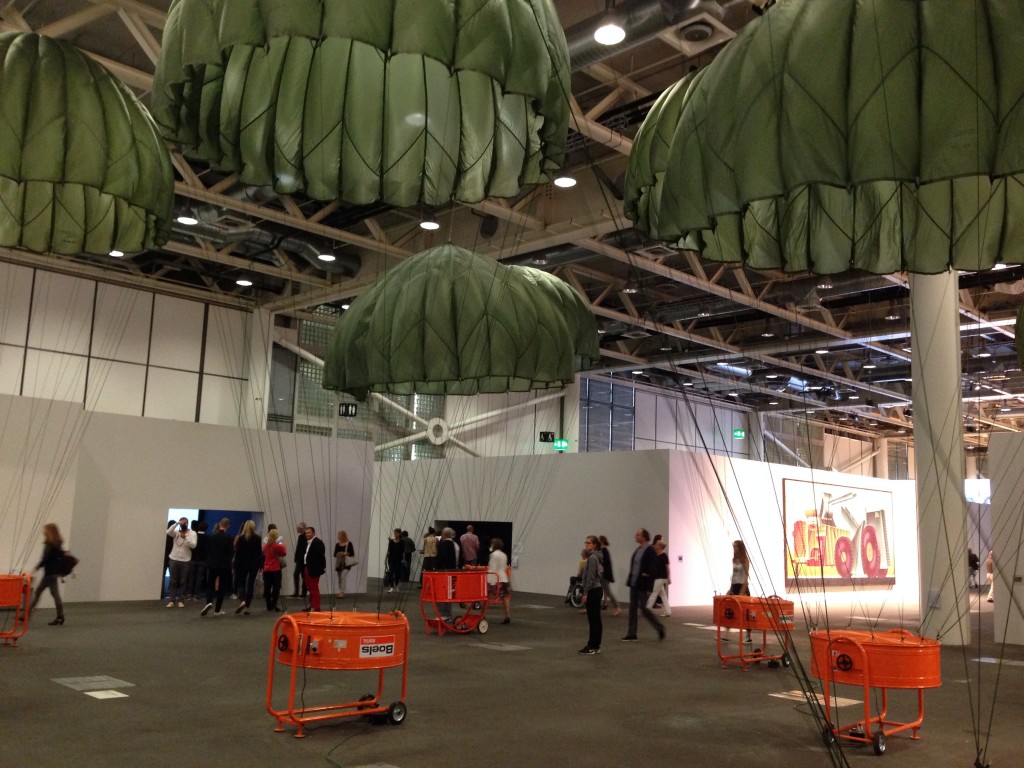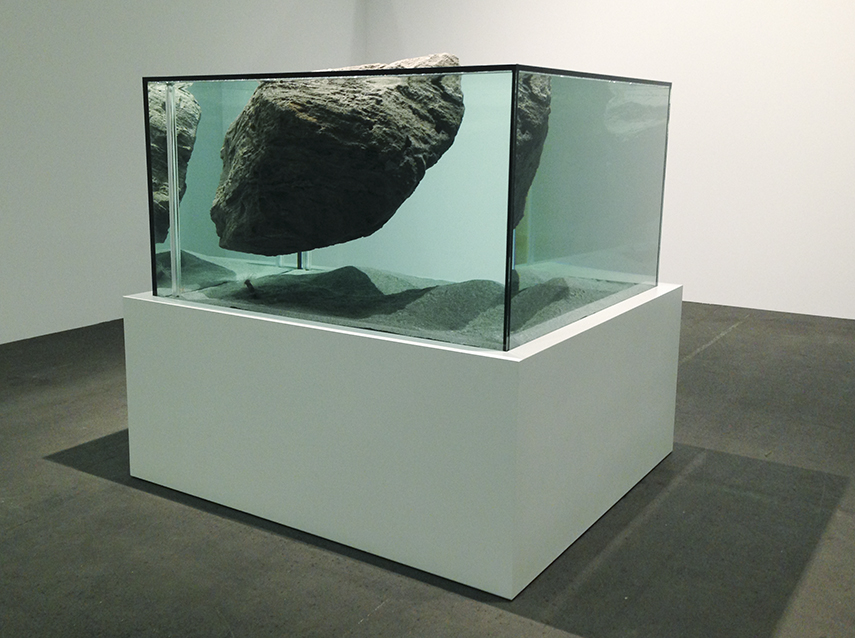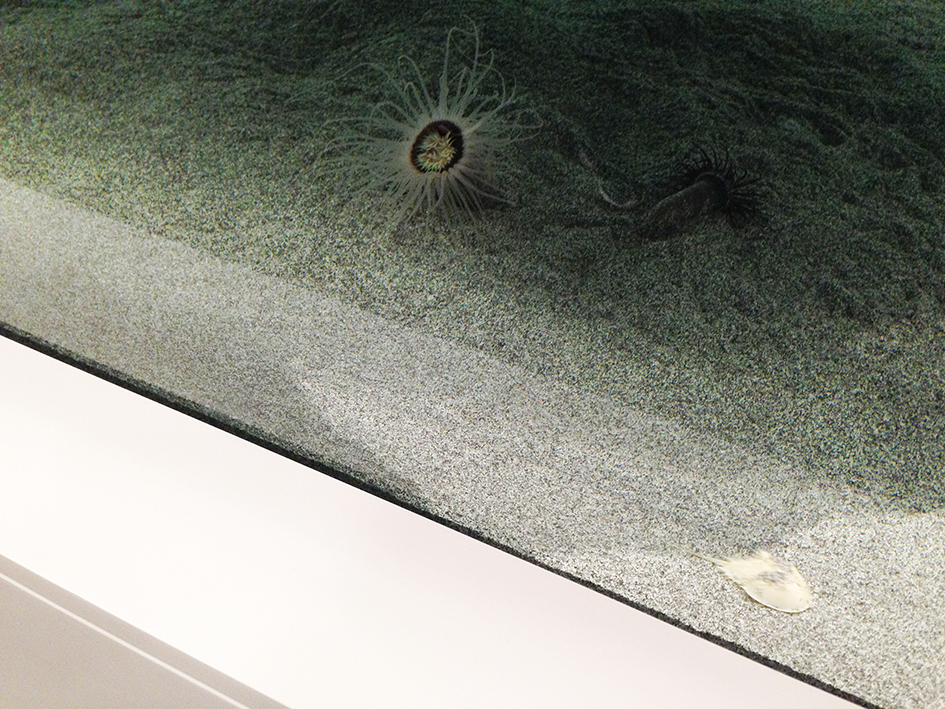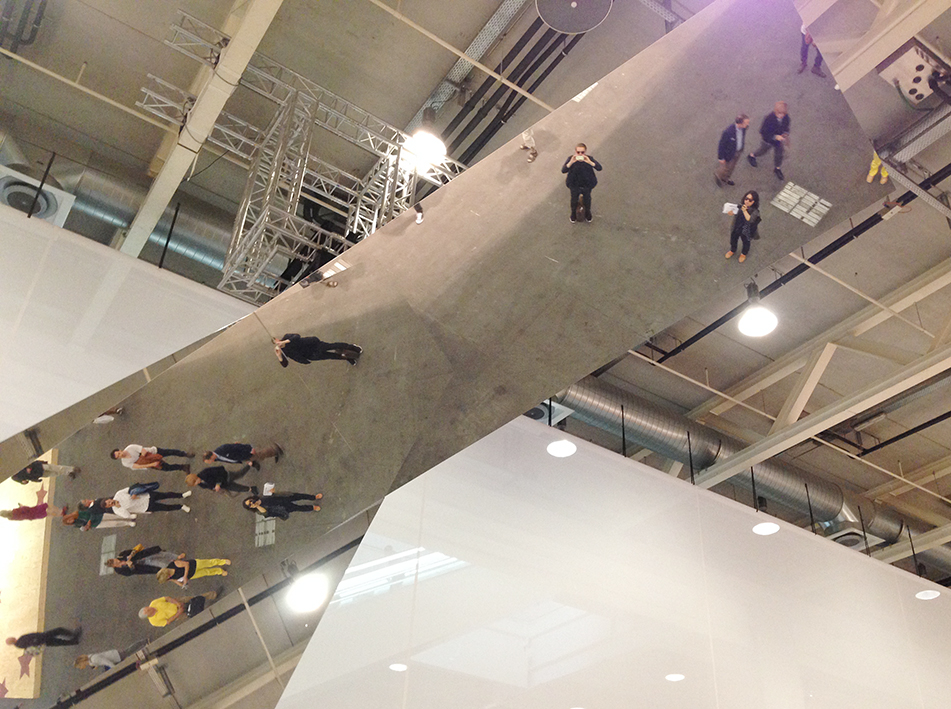
Gallery Unlimited 2015
Jeppe Hein, 360° Illusion III, 2007, 303 Gallery, Galerie Koenig, Berlin, Galerie Nicolai Wallner
Clare Lilley, curator of Yorkshire sculpture Park, shares with 200% her highlights of Unlimited.
200%: Walking around Unlimited, the art fair dedicated to outsized work, the atmosphere is very calm. However, the works in the fair, selected by Gianni Jetzer, are not less intense as a there is a lot of work in motion and work with political content. Right at the entrance, people gather around Julius von Bismarck’s work ‘Egocentric System’, which features the artist as an inhabitant of a concrete bowl spinning round in circles. He sits behind a desk looking at his mobile phone or lies in his bed. I wonder if the artist had followed an astronaut’s training in preparation for a trip into space where they have to deal with speed, gravity and centrifugal forces.
Olafur Eliasson, Your Space Embracer, 2004, Tanya Bonakdar Gallery
200%: Another work in motion, which brings you to a space navigation atmosphere, is Olafur Eliasson’s installation ‘Your Space Embracer’. A mirrored ring is suspended from the ceiling of a darkened room. The ring rotates as a lamp shines a beam of light through the shape, producing an arc of light that travels slowly across the walls and ceiling. A simple idea and magical experience to follow the light travelling through space.
Tony Lewis’s work written on a white wall with a large serif outline font “112 – Never argue with police officers, and address them ‘as ‘Officer'” is a quotation from H. Jackson Brown’s ‘Life’s Little Instruction Book’ that encourages the reader to live a rewarding life. In this work from 2013, the artist questions his own relationship to disobedience, rebellion, fear and authority. It can be considered as as a politically charged work or a cynical comment on the recent killings of African-Americans by US police officers.
Pedro Reyes, Disarm, Mechanized II, 2014, Lisson Gallery
200%: Pedro Reyes’s work ‘Disarm’, is political and in motion at the same time. It features eight instruments made out of armaments. From parts of revolvers, shotguns and machine guns, Reyes has created in collaboration with COCOLAB in Mexico, instruments such as a hi-hat and a harp. The instruments play intermittently. The music they produce doesn’t sound like Death Metal and is surprisingly friendly, pleasant to the ear.
At the coffee stand outside the Unlimited hall, I met with Clare Lilley, curator of Yorkshire sculpture Park and Frieze Sculpture Park.
Pedro Reyes, Disarm, Mechanized II, 2014, Lisson Gallery
Diango Hernández, Words to Sea, 2015, Alexander and Bonin, Nicolas Krupp, Marlborough Fine Art, Galerie Barbara Thumm
Clare Lilley: Overall I think Unlimited is very different compared with last year in terms of the scale”, Lilley comments. The presentation is much calmer and literally, the objects aren’t as big. There is nothing as brash as there was last year. It has gone from XXL to L.
Clare Lilley: Unlimited 2015 @ArtBasel is much calmer and the objects aren’t as big. It has gone from XXL to L.I like the construction of the painted waves. Hernández translated quotations from Castro’s speeches – such as “Inside the revolution everything; outside the revolution, nothing.” – into waves. He has developed a font called ‘Waves’ and all the characters in the font look the same, so the text looks like a repetition of the waves of the sea. When you are in Cuba, you are very aware of the fact that you are on an island surrounded by ocean. There are people on the island who really want to get to Florida. Then there are people in Florida, who are desperately looking over to this place, a place that they can’t ever go back to. The work is very beautiful and poetic.
Diango Hernández, Words to Sea, 2015, Alexander and Bonin, Nicolas Krupp, Marlborough Fine Art, Galerie Barbara Thumm
Roman Ondak, Signature, 2014, Kurimanzutto
Clare Lilley: I thought the room with the disassembled typewriter was a really beautiful room. I understood immediately. I knew, without anything even to read about it, that it was a disassembled typewriter which had some meaning in his life. For me, it speaks to the places that used to produce these kinds of objects, you get a real sense of having once been a factory or a warehouse. The installation of the work is so finely detailed. When you look at how he positioned those disassembled parts in relation to one another and on the walls, along with how he has layered them and lit them up with a single source of light, it’s very beautiful.
Roman Ondak, Signature, 2014, Kurimanzutto
Hector Zamora, OG-107 Scenery, 2012, Luciana Brito Galeria
Clare Lilley: I love the green parachutes which are blown up into the sky. Zamora has made a practice through doing things that are floating. He has made architectural projects, for example in Mexico, which are kind of like apartments going up into the sky and joining apartments at the top level. I think, this piece is related to him being in the Arizona desert and hearing the aircraft overhead. I have been in the Arizona desert a few times, for me it is all resonates. It an amazing place, you feel absolutely alone, there is a vast sky and suddenly, a fighter jet flies over. There is always that hint of something sinister in his work.
Pierre Huyghe, Cambrian Explosion, 2014, Hauser & Wirth
Clare Lilley: This piece with the levitated rock in the aquarium and tiny crabs scurrying in the sand is phenomenal. It’s fascinating how people are fascinated by living organisms. Also, when I was watching it, everybody was trying to figure out how the hell the rock was floating – nobody could work it out. It seems impossible to do what he is doing, unless it is a rock with some substance in it making it float.
Pierre Huyghe, Cambrian Explosion, 2014, Hauser & Wirth
Jeppe Hein, 360° Illusion III, 2007, 303 Gallery, Galerie Koenig, Berlin, Galerie Nicolai Wallner
Clare Lilley: I like the big, revolving mirror. When you have been working with mirrors in the way that Hein has done for quite some time, to keep extending the language is very difficult. However, I think he has succeeded in that piece. My feeling about Jeppe Hein is ultimately all about Buddhism, about coming back into yourself and being yourself. I think that the mirror almost does that, literally. That you are returning to yourself. You see people stood with it and they are just mesmerized. I think if that piece was on its own in a room somewhere, people would stay there for ages.

